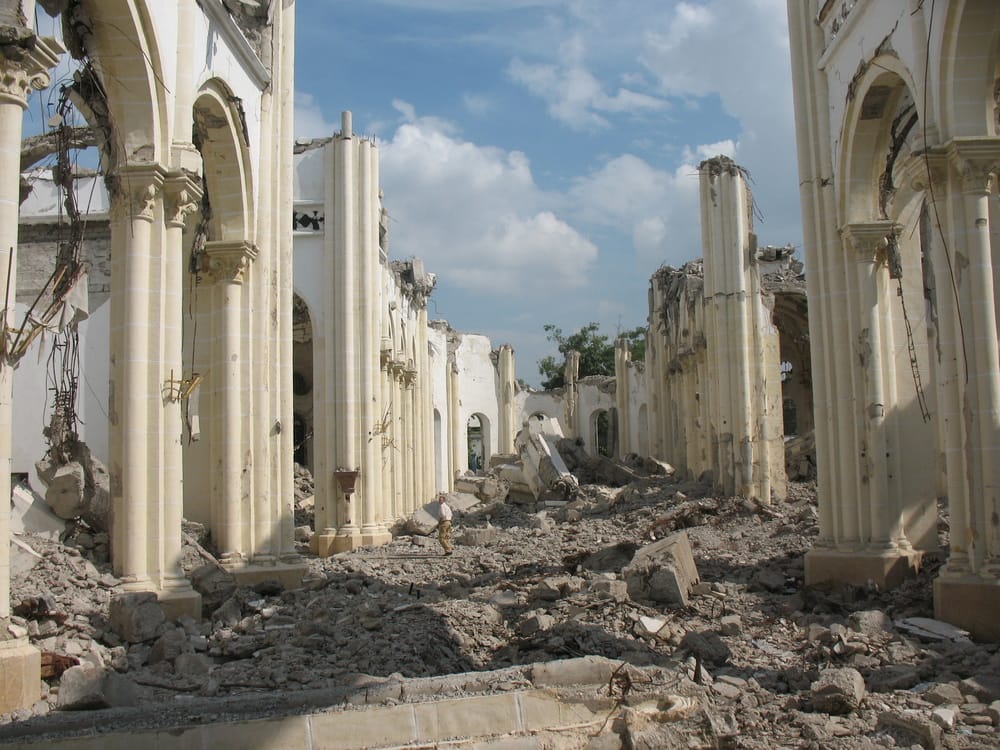There should be more to foreign aid than emergency support
Eva Coles condemns the current approach to humanitarian aid

If you were to hear mention of Haiti in a conversation, what would your initial thoughts be? Some of you would likely confuse it with Tahiti or have no clue as to what Haiti actually is. For most of you, though, I am sure the first thing to pop into your minds would be the devastating 7.0 magnitude earthquake that hit the impoverished country in January 2010, killing an estimated 300,000 and leaving over two million without homes.
As for me, Haiti is simply home. I am often approached about my origins, and I can say from personal experience that only after my mentioning the natural disaster are people able to place it on a map.
On the 4th of October, Haiti was once again ravaged by mother nature, only this time, the culprit was the category four hurricane Matthew. The southwest region received the brunt of the blow. Crop fields were swept away along with most of the livestock and, in some areas, 90% of the infrastructure was destroyed. You may be surprised to learn that this is simply due to the fact that almost all the houses are essentially tin-roof shacks.
Despite the well-intended nature of this gesture to the country, the long-lasting result was further destabilisation of an already fragile economy
Despite global awareness of the earthquake and its aftermath, I was shocked to discover that most remain completely oblivious to the population’s current living conditions. They assume the vast influx of emergency aid, which I would like to note was so highly advertised in the media, would have repaired some, if not all, the damages. Nonetheless, over 80% of the rubble is unmoved and millions continue living as refugees in tent-cities outside the capital, Port-au-Prince.
In fact, take a short drive through and you would be astonished at the seemingly post-apocalyptic landscape the city became, and still remains, since that fateful afternoon on the 12th of January 2010.
This begs the question: Why are Haitians still living in such dire conditions? Conditions that should have been dealt with years ago? One answer, however paradoxical, may lie with the humanitarian aid community.
In Haiti’s case, external aid originating from NGOs to entire governments resulted in a plethora of unintended consequences. Few may be aware of it, but is an issue which arose long before 2010.

The inhabitants’ living conditions remain unchanged as they grew dependent on foreign donations
In the early 1980s, Haiti was self-sufficient in rice production. Though, due to a growing population, the International Monetary Fund (IMF) proposed new trade liberalisation policies on rice imports, aimed at preventing famine. Once implemented, import tariffs were subsidised from 35% to a mere 3%. A wave of rice imports from the United States followed, commonly known as ‘Miami Rice’. Competition with domestic production increased and by the late 1990s, imports outpaced local production, and those employed in the sector were forced to abandon work and move elsewhere. This created a dependency on imported rice, and this pattern rippled across the agricultural sector, affecting mainly peanut, and sugar cane cultivation. Thus, despite the well-intended nature of this gesture to the country, the long-lasting result was further destabilisation of an already fragile economy.
After the earthquake struck, millions of individuals donated to various charities providing immediate emergency aid. A whopping $10 billion were raised from these efforts and promised to the Haitian government. Yet, less than 1% reached its designated target. What, then, became of this huge sum of money?
Firstly, private donations were mainly directed to emergency response, all imported from outside the country. Hence, virtually no money was allocated to local government, companies, or organizations.
Secondly, the US government and organisations such as USAID spread their investments in a rather strange manner. Over a $ 100 million was allocated to housing projects, including luxury townhouses with swimming pools for the staff.

As though to further mock the suffering, $ 18 million was spent on the construction of an Olympic-style sports and recreational centre adjacent to one of the largest tent cities, where clean running water and plumbing was alien to most. Even more,$ 260 million funded the completion of Caracol Industrial Park, which is located over 150 miles north of where the earthquake struck.
Not only has the distribution of foreign aid to Haiti after the earthquake been conducted in a most bizarre fashion, whatever efforts actually did reach the Haitian people purely involved giving. This did provide immediate and effective results in the short term. Nonetheless, after six years of aid influx, it does not come as a surprise that the inhabitants’ living conditions remain unchanged as they grew dependent on foreign donations.
To summarise, aid has become a self sustaining industry, promoting permanent charities, particularly in places like Haiti, driving out local businesses and preventing governments from progressing on their own terms. But how can a government be expected to progress when external influences (e.g. charities) reduce the pressures of certain issues (e.g. poverty), thereby distracting from a truly effective solution? Though there is no correct answer, a stepping stone would involve efforts aimed at increasing pressures on local government to instil self-sustained change, through local job creation, reconstruction of infrastructure and, finally, on education.








